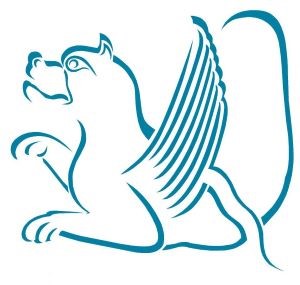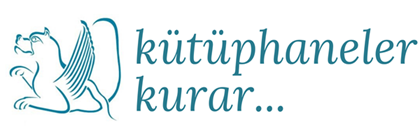#smrgKİTABEVİ Women War and Work in the Ottoman Empire: Society for the Employment of Ottoman Muslim Women 1916 - 1923 -

On 14 August 1916, the Committee of Union and Progress (İttihâd ve Terakkî Cemiyeti), the ruling party of the Ottoman Empire, established a new society under the leadership of one of its leading figures: Vice-Commander and Minister of War, Enver Paşa. The Society for the Employment of Ottoman Muslim Women (Kadınları Çalıştırma Cemiyet-i İslâmiyesi) was a Unionist organization created to find employment for Muslim Ottoman women who were in urgent economic need. Within a matter of months, it received more than 14,000 applications and was soon employing 8,194 destitute Ottoman women in its braches and in the related state and military institutions. In time, it would offer jobs to an aggregate number of 20,000 women workers, and became the leading employer of Muslim Ottoman women in the Ottoman Empire.
This comprehensive work constitutes both a case study of Muslim Ottoman women during World War I, and a detailed analysis of the foundation, organization and activities of the Society for the Employment of Ottoman Muslim Women, created to find employment for them.
İçindekiler
A General Overview
World War I as a Total War
Nation and Gender
Casualties
Winners and Losers of World War I
The Great Britain: "Bring the Boys Back Home!"
France
The United States of America: "Yankees at War, Females at Work"
Australia and New Zealand: the "ANZAC"
Germany: "All Quiet on the Western Front"
Russia: "The Czar is Dead, Long Live the Bolsheviks!" and others: Austria-Hungary, Italy, Bulgaria, and Greece
The Post-War Period
The Ottoman Empire
Issues of Comparison
CHAPTER I: STRUCTURE OF THE SOCIETY
Introduction: Available Sources and Literature
Foundation
Members
Revenues and Expenditures
The Board of Directors
The Board of Members
The General Manager
The Board of Women
Changes in the Board of Directors and Congresses
The End of the Society
CHAPTER II: BRANCHES, PRODUCTION AND WORKERS
Branches
Production and Workers
Şevkiye: Portrait of a Woman Worker
CHAPTER III: WOMEN WORKERS' BRIGADE
Introduction
Advertisements
Registration and Personal Files
Building and Furniture
Personnel
Hierarchy among Women: Kâtibes and Me'mûres
Women Workers
Activities
Payments
Promotion
Marriage and Permissions
Health
Ceremony
Discipline, Disciplinary Committee, Crime and Punishment
Sexual Segregation
Uniforms and Ranks
Revisions
Photographs and Publications
Conclusion
CHAPTER IV: THE CAMPAIGN OF THE SOCIETY TO MARRY OFF WOMEN WORKERS
Introduction
Regulations on Marriage
Marriage Center
First Marriages
Marriage Advertisements
Male and Female Candidates
Mutual Expectations of the Candidates
Reactions of the Ottoman Press
Conclusion
CHAPTER V: THE SOCIETY, ORPHANS OF WAR AND ABANDONED CHILDREN
Introduction
The Campaign of the Society
"Il est mon frère!"
The Battle over the Custody of Orphans of War and Abandoned Children
Conclusion
CONCLUSION
APPENDICES
BIBLIOGRAPHY
INDEX
On 14 August 1916, the Committee of Union and Progress (İttihâd ve Terakkî Cemiyeti), the ruling party of the Ottoman Empire, established a new society under the leadership of one of its leading figures: Vice-Commander and Minister of War, Enver Paşa. The Society for the Employment of Ottoman Muslim Women (Kadınları Çalıştırma Cemiyet-i İslâmiyesi) was a Unionist organization created to find employment for Muslim Ottoman women who were in urgent economic need. Within a matter of months, it received more than 14,000 applications and was soon employing 8,194 destitute Ottoman women in its braches and in the related state and military institutions. In time, it would offer jobs to an aggregate number of 20,000 women workers, and became the leading employer of Muslim Ottoman women in the Ottoman Empire.
This comprehensive work constitutes both a case study of Muslim Ottoman women during World War I, and a detailed analysis of the foundation, organization and activities of the Society for the Employment of Ottoman Muslim Women, created to find employment for them.
İçindekiler
A General Overview
World War I as a Total War
Nation and Gender
Casualties
Winners and Losers of World War I
The Great Britain: "Bring the Boys Back Home!"
France
The United States of America: "Yankees at War, Females at Work"
Australia and New Zealand: the "ANZAC"
Germany: "All Quiet on the Western Front"
Russia: "The Czar is Dead, Long Live the Bolsheviks!" and others: Austria-Hungary, Italy, Bulgaria, and Greece
The Post-War Period
The Ottoman Empire
Issues of Comparison
CHAPTER I: STRUCTURE OF THE SOCIETY
Introduction: Available Sources and Literature
Foundation
Members
Revenues and Expenditures
The Board of Directors
The Board of Members
The General Manager
The Board of Women
Changes in the Board of Directors and Congresses
The End of the Society
CHAPTER II: BRANCHES, PRODUCTION AND WORKERS
Branches
Production and Workers
Şevkiye: Portrait of a Woman Worker
CHAPTER III: WOMEN WORKERS' BRIGADE
Introduction
Advertisements
Registration and Personal Files
Building and Furniture
Personnel
Hierarchy among Women: Kâtibes and Me'mûres
Women Workers
Activities
Payments
Promotion
Marriage and Permissions
Health
Ceremony
Discipline, Disciplinary Committee, Crime and Punishment
Sexual Segregation
Uniforms and Ranks
Revisions
Photographs and Publications
Conclusion
CHAPTER IV: THE CAMPAIGN OF THE SOCIETY TO MARRY OFF WOMEN WORKERS
Introduction
Regulations on Marriage
Marriage Center
First Marriages
Marriage Advertisements
Male and Female Candidates
Mutual Expectations of the Candidates
Reactions of the Ottoman Press
Conclusion
CHAPTER V: THE SOCIETY, ORPHANS OF WAR AND ABANDONED CHILDREN
Introduction
The Campaign of the Society
"Il est mon frère!"
The Battle over the Custody of Orphans of War and Abandoned Children
Conclusion
CONCLUSION
APPENDICES
BIBLIOGRAPHY
INDEX

























